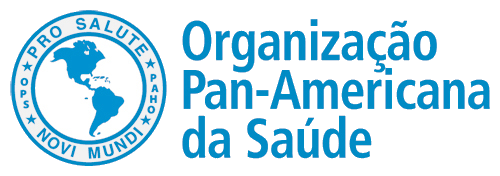Articles
Total of 6747 records found (0.0141 seconds).
0055/2025 - NETWORK OF FORMAL AND INFORMAL CARE PROVIDED BY FAMILY MEMBERS FOR CANCER PATIENTS RECEIVING PALLIATIVE CARE AT HOME
(05/03/2025)
Luísa Cavalcanti Martinho Moraes, Audrei Castro Telles, Nair Caroline Cavalcanti de Mendonça Bittencourt, Beatriz Barboza Fernandes, Beatriz Brandão do Santos, Cristina Rosa Soares Lavareda Baixinho, Andreia Cátia Jorge Silva da Costa, Marcelle Miranda da Silva
Artigo Temático
Publicado
Introduction: In the face of advanced oncological disease in palliative care at home, caregivers are mostly family members who are part of the informal system. The lack of guidance and social support exposes them to stress and overload that can affec...
0054/2025 - Gender-race-class intersectionality in the training of health professionals at UFBA, Brazil
(05/03/2025)
Renata Meira Veras, Ráren Paulo da Silva Araújo, Vitória Batista Calmon de Passos, Mônica Lima de Jesus, Cristina Goenechea Permisán, Maricelly Gómez Vargas
Artigo Temático
Publicado
The aim of this article was to identify and analyze the presence/absence of social markers of gender, race and class in the syllabuses of health courses offered at two campuses of the Federal University of Bahia, in force in 2024. In the 22 courses a...
0053/2025 - REFLECTIONS OF HEALTH PROFESSIONALS ON THE USE OF THE ESTIMULE PORTAL TO HELP IN THE DEVELOPMENT OF AUTISTIC CHILDREN
(05/03/2025)
Christina Cesar Praça Brasil, Francisca Francisete de Sousa Nunes Queiroz, Jonas Loiola Gonçalves, Fabiana Neiva Veloso Brasileiro, Tainá Christiane Mello, Vânia Peixoto, Rita Alegria, Juliana Carneiro Melo
Artigo Temático
Publicado
The Estimule Portal is a technological tool to support healthcare for autistic children, incorporating a base of 97 playful activities classified by communicative, social and motor skills. The objective was to understand the experiences of using the ...
0052/2025 - GEOGRAPHICAL DISTRIBUTION AND FACTORS ASSOCIATED WITH PHYSICIANS’ AND NURSES’ PRODUCTIVITY IN BRAZILIAN PRIMARY HEALTHCARE
(05/03/2025)
Rafael Damasceno de Barros, Jorge Augusto Silva Valente de Andrade, Hugo de Cerqueira Melo, Aiara Nascimento Amaral Bomfim
Artigo / Tema Livre
Publicado
The aim of this study was to analyze the geographical distribution and factors associated with productivity in Brazilian Primary Health Care (PHC) for the year 2023. Productivity was defined as the number of individual consultations conducted by phys...
0051/2025 - Rastreando o tempo de tela de diferentes dispositivos eletrônicos em adolescentes com idade escolar: um estudo longitudinal de 3 anos
(05/03/2025)
Mileny Caroline Menezes de Freitas, Julio Cesar da Costa, Danilo Rodrigues Pereira da Silva, Catiana Leila Possamai Romanzini, Marcelo Romanzini, Enio Ricardo Vaz Ronque
Artigo / Tema Livre
Objetivo: Verificar o rastreamento do tempo de tela (TT) de diferentes dispositivos eletrônicos em adolescentes com idade escolar durante um acompanhamento de três anos. Métodos: Estudo longitudinal de três anos envolvendo estudantes de escolas p...
0050/2025 - Political Dimension of Health Systems Resilience: The Brazilian Health Reform Movement and the Unified Health System
(28/02/2025)
Sonia Maria Fleury Teixeira, Jamilli Silva Santos, Ana Ester Maria Melo Moreira, Tarcia Munyra Araújo Barreto
Artigo / Tema Livre
Publicado
The scientific production on resilience in health reveals a great debate around its concept, dimensions and applications, in addition to criticisms such as the distancing of studies that deal with this topicthose dedicated to analyzing the Brazilian ...
0049/2025 - Advances, challenges, and future perspectives to the Unified Health System (SUS) resilience
(27/02/2025)
Marco Antonio Catussi Paschoalotto, Eduardo Alves Lazzari, Marcia C. Castro, Rudi Rocha, Adriano Massuda
Artigo Temático
Publicado
This study aims to present and discuss the advancements, challenges, and future perspectives of Brazilian UHS resilience. To achieve this objective, an exploratory and qualitative study was conducted involving 30 interviews with academic experts and ...
0048/2025 - Parceria público-privada na área da saúde: a experiência da maior emergência pública da América Latina
(27/02/2025)
Paula Travassos, Ana Karinny Clímaco de Oliveira Grego, Mariana Monteiro de Castro e Castro, Vinícius Borges de Oliveira Ribeiro, Janessa Vieira Santos, André Luiz Carneiro de Vasconcellos
Artigo Temático
Publicado
Brazilian scientific production on the subject of Public-Private Partnerships (PPP) in health is still scarce. In the state of Rio de Janeiro, the first PPP initiative was launched in 2023 for the Souza Aguiar Municipal Hospital Complex (CHMSA) invol...

Sponsors









